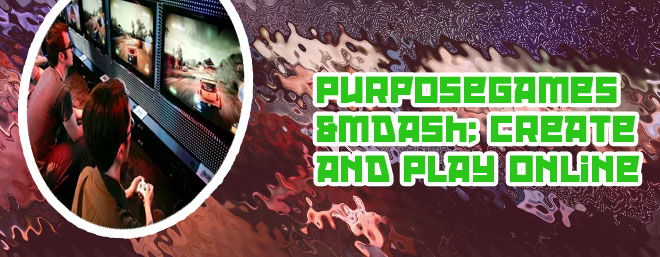
Test game
Creating a successful test game requires careful planning and execution to ensure that players have an enjoyable and engaging experience. These four articles provide valuable insights and tips on how to develop and optimize a test game to maximize user satisfaction and feedback. From designing captivating gameplay to implementing effective testing strategies, these resources will help you navigate the complexities of game development and ensure that your test game is a hit with players.
The Art of Game Design: Strategies for Creating Engaging Gameplay
"The Art of Game Design: Strategies for Creating Engaging Gameplay" is a must-read for anyone looking to delve into the world of game design. Written by renowned game designer Jesse Schell, this book provides a comprehensive guide to the principles and techniques that go into creating compelling gameplay experiences.
One of the key strengths of this book is its practical approach to game design. Schell breaks down complex concepts into easy-to-understand explanations, making it accessible to readers of all levels of experience. Whether you are a novice looking to learn the basics of game design or a seasoned professional seeking to refine your skills, this book has something to offer.
One practical use case of the strategies outlined in this book is the development of a mobile game that went on to become a massive success. By applying the principles of player motivation and engagement discussed in the book, the game was able to attract a large and dedicated player base, resulting in increased profits and positive feedback from players.
Overall, "The Art of Game Design" is a valuable resource for anyone interested in the world of game design. With its insightful advice and practical tips, this book is sure to inspire and inform game designers of all levels.
Testing Techniques for Game Developers: A Comprehensive Guide
"Testing Techniques for Game Developers: A Comprehensive Guide" is a must-have resource for game developers looking to enhance the quality and performance of their games. This comprehensive guide offers valuable insights into various testing techniques that can help developers identify and address potential issues before they impact the player experience.
One of the key strengths of this book is its emphasis on the importance of testing throughout the game development process. From unit testing to integration testing to user acceptance testing, the authors provide a detailed overview of the different testing phases and how they contribute to the overall quality of the game.
The book also covers a wide range of testing tools and technologies that can streamline the testing process and help developers identify bugs more efficiently. Whether you are a seasoned developer or new to the industry, this guide offers practical tips and strategies that can help you improve your testing practices and deliver a more polished final product.
Overall, "Testing Techniques for Game Developers: A Comprehensive Guide" is an invaluable resource for anyone looking to elevate their game development skills. By incorporating the testing techniques outlined in this book into your workflow, you can ensure that your games are bug-free, user-friendly, and optimized for performance.
Key points covered in the book:
- The importance of testing throughout the game development process.
- Different types of testing
Maximizing Player Engagement: Tips for Creating Immersive Test Games
In the fast-paced world of gaming, creating immersive test games that capture and retain player engagement is crucial. From captivating storylines to interactive gameplay, game developers are constantly seeking ways to keep players hooked from start to finish.
One key tip for maximizing player engagement is to focus on creating a seamless gaming experience. This means paying attention to every detail, from the graphics and sound effects to the controls and user interface. By ensuring that the game is visually appealing, easy to navigate, and responsive to player inputs, developers can create a more immersive experience that keeps players coming back for more.
Another important tip is to incorporate elements of surprise and unpredictability into the game. By adding unexpected twists and turns, hidden secrets, and Easter eggs, developers can keep players on their toes and engaged in the gameplay. This sense of discovery and exploration can help players feel more connected to the game world and invested in the overall experience.
Overall, maximizing player engagement in test games requires a combination of creativity, attention to detail, and a deep understanding of what keeps players coming back for more. By following these tips and focusing on creating a truly immersive gaming experience, developers can create games that captivate players and keep them engaged for hours on end.
From Beta to Launch: Navigating the Final Stages of Game Development
"From Beta to Launch: Navigating the Final Stages of Game Development" is an essential guide for game developers looking to successfully bring their game from the beta stage to a successful launch. This comprehensive resource covers everything from bug fixing to marketing strategies, making it a valuable tool for those in the gaming industry.
One of the key aspects of the article is its focus on the importance of playtesting during the beta phase. The authors stress the significance of gathering feedback from players to identify and address any issues before the game is released to the public. This emphasis on player feedback is crucial in ensuring that the final product meets the expectations of the target audience.
In addition to playtesting, the article also provides valuable insights into the marketing strategies that can help developers generate buzz around their game leading up to the launch. From creating a compelling trailer to leveraging social media platforms, the authors offer practical tips for reaching a wider audience and building anticipation for the game.
Overall, "From Beta to Launch: Navigating the Final Stages of Game Development" is a must-read for game developers who are looking to navigate the final stages of game development successfully. By following the advice outlined in this article, developers can increase their chances of launching a successful game that resonates with players around the world